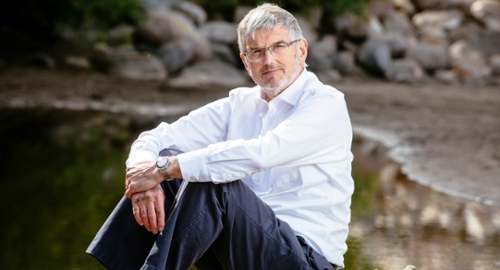
Solving global water problems with strategic, place-based science
Howard Wheater outlines the new holistic research approach needed to address pressing challenges of water security.
By Meagan HintherThis article first appeared in the Spotlight on Canada Excellence Research Chairs in March 2015.
In London, England, circa 1988, the top international environmental concern was acid rain—especially its impact on water quality. Howard Wheater was part of the Royal Society of London research team whose results persuaded Prime Minister Margaret Thatcher to change the country’s guidelines for sulphur dioxide emissions, effectively curbing acid rain.
“It was a very complicated problem with many dimensions,” recalls Wheater. “It required us to understand the way in which water moves through river basins, then understand how the chemistry is behaving and the policy changes needed to mitigate the issue.”
Recently, the World Economic Forum identified water crises as the greatest risks facing the globe. Again, Wheater is blending many disciplines to help solve these complex environmental issues. This time, he is doing so as Canada Excellence Research Chair in Water Security at the University of Saskatchewan.
“The freshwater environment is facing unprecedented global pressures,” he says. “These include unsustainable use of surface and groundwater, pollution to rivers and lakes, and damage from flooding and drought. The solutions increase in complexity when set within the context of climate change and socio-economic pressures like population growth and fragmented governance.”
Wheater established the University of Saskatchewan’s Global Institute for Water Security (GIWS) in 2011 to help address these concerns. The institute builds on the Canada Excellence Research Chair funding, and draws on additional research areas beyond the scope of the chair itself—such as in the social sciences, and water and health.
Wheater cautions that, in an era of human-influenced change, the water science community can’t continue with “business-as-usual and incremental science.”
Wheater says the GIWS has taken exactly this kind of approach by developing the Saskatchewan River Basin as a large-scale observatory.
“This project allows us to model environmental changes at larger scales, across many jurisdictions, and throughout different biomes,” he says.
The basin is half the size of France. It stretches from the Rocky Mountains in Alberta, through boreal forest and across prairie, all the way to Saskatchewan’s border with Manitoba. The area is home to 80 per cent of Canada’s agriculture production and includes important oil, gas and potash resource development areas. Current pressures on water resources in the basin include that water licences in southern Alberta have been fully allocated, and the locally devastating floods in 2011, 2013 and 2014.
“The region embodies many of the water management pressures faced worldwide,” notes Wheater.
With 16 field sites across three provinces, the GIWS’s research program is varied. Yet, researchers on all the projects work together to improve understanding and diagnosis of environmental changes across the basin.
“An important objective is to improve modelling tools and methods to address water management at the river basin scale—as well as improve weather prediction, and regional and global climate modelling,” says Wheater.
In 2013, the Saskatchewan River Basin research project was designated a regional hydroclimate project of the World Climate Research Programme’s Global Energy and Water Exchanges project. It is currently the only such one in North America.
“It helps us link with a much broader research community which is interested in global perspectives,” says Wheater.
Local community concerns are also a vital component of the Saskatchewan River Basin research program.
“We call this theme ‘socio-hydrology,’ says Wheater. “It includes both the human drivers of hydrological change, and the social processes through which water science is translated and communicated to relevant decision-makers.”
Wheater cites the GIWS’s related work in the Saskatchewan River delta as an example of how transdisciplinary science can lead to stronger water security for communities.
The delta straddles the border between Saskatchewan and Manitoba and is affected by water used in the basin and from upstream dams. This biologically diverse region is home to First Nations communities that rely on hunting, trapping and fishing for their livelihoods.
“We have toxicologists, biologists, hydrologists and social scientists working together with the community to understand how long-term cycles of flooding and drought are affecting animal and plant productivity and, in turn, community livelihoods downstream of dams,” says Wheater.
A GIWS study found that concentrations of mercury in fish have been dropping since the 1970s, and are now at levels considered safe to eat. These findings helped lead Saskatchewan’s provincial government to lift a ban on the sale of fish from the area.
“Water is intimately connected to land, energy and food,” says Wheater. “By taking a holistic approach to water science, we can support the development of policies and practices for stronger decision-making.”
